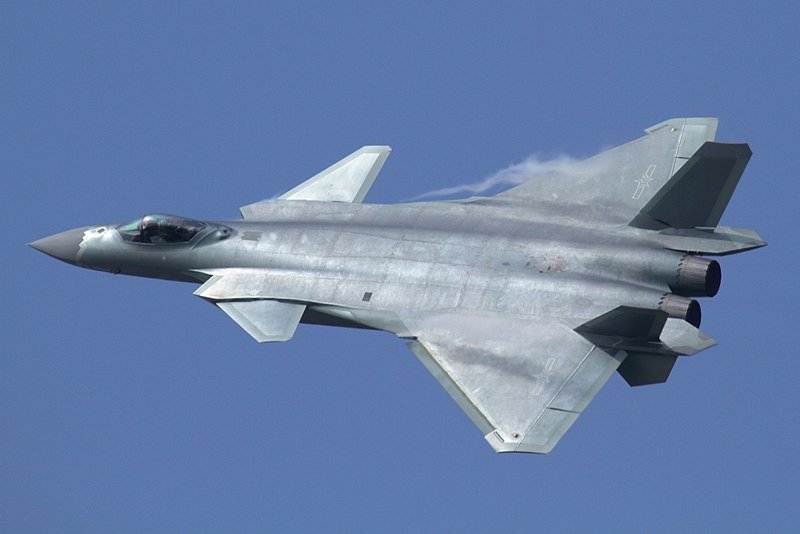4th Generation vs 5th Generation vs 6th Generation Fighters – What’s The Difference?

Video Credit: Destiny
Video Transcript:
[Note: the transcript was produced by a computer, so is NOT 100% accurate. Apologies for that, but over time it will be cleaned up.]
What do we mean when we say fifth generation fighter when it comes to fighter jets? The modern world is currently in a transition. The combat fighters that we all know and love over the years are reaching the end of their operational lifespans. There have been many update programmes for some of these aircraft, but the air force has cancelled these expensive upgrades as it is now more feasible to build an entirely new platform thanks to major advances in technology. There are some sixth generation concepts out there and of course our latest fifth generation fighters keep watching. You might be surprised at what is actually operational to get an idea of where we are now. It’s a good idea to take a look at fourth generation fighters just to see how far we have come. These are jet fighter aircraft that had been in service since 1980 and represent design concepts of the 1970s which have become drastically and dangerously outdated with weapons mounted on the outside of the aircraft.
Significant drag is produced which interferes with manoeuvrability and while it might seem logical to keep updating the jet, the old air frame designs are outdated compared with new technology. Fifth generation fighters are planes that are associated with technologies developed during the first part of the 21st century. Of course, the exact characteristics of fifth generation fighters is controversial and vague. Lockheed Martin defines them as having all aspects stealth even when arm and LPI are low probability of intercept or radar allowing the aircraft the ability to avoid detection by passive radar detection equipment. While it is searching for a target. The Lockheed Martin [inaudible] raptor is a fifth generation single seat twin engine. All weather stealth tactical fighter developed for the United States air force. The aircraft was variously designated f 22 and FAA 22 before it formally entered service in December, 2005 as the f 22 a. The aircraft was designed primarily as an air superiority fighter, but also has ground attack, electronic warfare and signal intelligence capabilities where it can pick up any communications.
The [inaudible] combination of stellar upgraded air frame giving exceptional aerodynamic performance and situational awareness. Make this one one of the most dangerous fighter jets in the world, and surprisingly enough, it is one of only three fifth generation aircraft and military service that is operational. Not only is it the most advanced aircraft in the world, but it is also the most expensive fighter aircraft to date. With each plane costing $150 million, the entire programme cost is 67 point $3 billion. There are few countries that can afford this. The have 35 lightning to built by. Lockheed Martin is a single seat single engine, all weather, stealth, multi-role fighter jet. It’s job is to perform ground attack and air superiority missions. The most obvious difference between the [inaudible] and the f 35 is that the f 22 has to F1 19 PW 100 turbo fan engines. Two things set the f 22 engines apart from the [inaudible] engine.
The print and Whitney F1 19 gives the [inaudible] the ability to super crows, meaning that it’s operating at supersonic speeds without using after burners. Secondly, the f 22 has convergent divergent thrust vectoring nozzles, which vectors thrust up or down at a maximum of 20 degrees, giving the [inaudible] manoeuvrability that the f 35 just can’t match. The other obvious and unmentioned thing is that one, if one 19 puts out 35,000 pounds of thrust, well two engines give the [inaudible] 65,000 to 70,000 pounds of thrust. There are three main models. You have 35 eight uses conventional takeoff and landing, but the F 35 B can short take off and converted Holy Land like the old Harrier jump jets. And then there is the [inaudible] which was designed with a catapult assisted takeoff, but arrested recovery for use on aircraft carriers. The 35 first flew on December 15th, 2006 the programme ended up seven years behind schedule and was $163 billion over budget, but by July, 2015 the United States Marines declared its first squadron of f 35 B fighters ready for deployment.
The aircraft has a tonne of fifth-generation improvements including low maintenance, stealth technology, integrated avionics and sensor fusion, which increases the pilot situational awareness. The fighter jet is also equipped with autonomic logistics, global sustainment and autonomic logistics information system and computerised maintenance management system to help ensure the aircraft can remain operational with minimal maintenance man power and lightweight and powerful lithium ion batteries. Basically the plane can take care of itself and manage its own systems without a full maintenance crew. It has a lot of other incredible technologies, but many of them remain top secret information. The engine and the f 35 is the f one 35 two spool after burning turbo fan built by Pratt and Whitney. It is currently the most powerful jet fighter engine ever developed. The conventional takeoff and landing jet edge and model produces 28,000 pounds of thrust and as much as 43,000 pounds with afterburner.
This new engine design was actually developed from the proven Pratt and Whitney F1 19 PW 100 engine which powers the u s air force have 22 raptor. The only other operational fifth generation fighter jet currently is the Chinese Jang Du j [inaudible], which is a single seat twin jet. All weather’s stealth fighter aircraft developed by China’s Chengdu Aerospace Corporation for the People’s Liberation Army Air Force. The third operational fifth generation. The Chengdu j 20 was designed as an air superiority fighter with precision strike capability in descends from the j x x programme of the 1990s it made its maiden flight on January 11th, 2011 but it wasn’t revealed until 2016 by March, 2017 the aircraft was in military service. So how does it compare with the [inaudible]? The j 20 is longer but has a shorter wingspan, but both have a top speed of 1,534 miles per hour faster than the speed of sound. One problem for the j 20 is its reliance on Chinese or Russian made engines which severely affect manoeuvrability and stealth capacity at supersonic speeds.
The engines and the [inaudible] allow it to super cruise at mach 1.8 and of course the [inaudible] has vectoring nozzles that enable it to perform agile manoeuvres even at supersonic speeds. The [inaudible] has excellent frontal inside stealth capabilities, but the rear of the plane possibly due to the engines is thought to be more vulnerable to radar when compared to the f 20 to the j 20 does have a larger bay allowing it to carry longer range missiles for precision laser guided bombs. Interestingly enough, the fighter jet is not confirmed to have any guns. Of course that doesn’t mean it’s not packing a canon in the wing or nose somewhere or could even have a laser weapons. We have 22 on the other hand has a 20 millimetre em 61 82 Vulcan cannon and can carry eight short or medium range missiles and air to air to air to ground missiles.
Armed with that information, it looks like the [inaudible] would be able to hold its own against a j 20 but there is one more fifth generation fighter jet out there that is supposed to enter military service and be operational in the latter half of 2019 the Russian sequoia s u 57 it is the designation for the stealth single seat twin engine multi-role fighter developed for air superiority and attack operations. It is the first Russian jet fighter to utilise still technology that has other fifth-generation traits such as super cruise, super manoeuvrability and advanced avionics. This new fighter jet is intended to succeed that make 29 and the Su 27 in the Russian air force even though there are only three operational and in service. Fifth generation jet fighters in the world, man with the Russian jet coming into service makes only four models. Money. Countries are already looking toward the future of six generation aircraft.
The United States air force is pursuing development and acquisition of a sixth generation fighter through the penetrating counter air programme to replace its existing air superiority aircraft such as the McDonald Douglas F 15 Eagle and compliment existing platforms in surface such as the Lockheed Martin [inaudible] raptor. The USA have published a video sometime in March, 2018 showing a conceptual sixth generation fighter called the f x, which is a very modern design and one of the future weapons demonstrated was a laser beam that can cut another, a fighter jet in two pieces. Since 2015 United States air force has had plans to mount lasers on current planes and jets like the 15 and f 16 and the AC one thirties Lockheed Martin was recently awarded a 26 point $3 million contract to develop the laser for fighter jet. It is unclear what capabilities a sixth generation fighter would have over a fifth generation fighter, which already advanced by leaps and bounds over a fourth generation fighter like the trustee f 16 or f 15 fighting eagle.
But these new fighters could have the possibility of being manned or unmanned. They will likely use artificial intelligence for sorting data and analysing threats, giving the pilot the ability to focus on objectives. Modern jets could also control and orchestrate swarms of unmanned vehicles as they flew around the pilots jet providing defensive and offensive capabilities. But surprisingly there are many proposed models. Russia has been drawing up plans for the Mikoyan Mig 4 for however the programme is highly top secret and not much is known about it. The United Kingdom unveiled a model of the next generation aircraft, but the tempest concept in July, 2018 this aircraft will have two engines hidden away deep inside of the airframe to help keep its radar and infrared signatures as low as possible. Rolls-Royce is currently working on the engine design using composite materials as an advanced manufacturing process so that the engine is super lightweight and has better thermal management.
All those things designed to keep the engines off of radar. The aircraft is also slated to get many offensive and defensive weapons locked away inside the hall and defensive directed energy weapons like lasers gets a cool looking aircraft and it will be exciting to see it come together. That is if the country can afford the programme. The USA is currently working on two six generation models. The Boeing f a x x and the U s AAF FX fighter jet Japan is also getting into the sixth generation game with the RDI I three fighter or Mitsubishi of three which is based on technology developed for the Mitsubishi X to Shinjin. Despite this, there is very little reporting on progress from these programmes and it is interesting that we have jumped from fifth generation right to six generation with only four fighters doing service in 2019 it could be possible that our technology has increased so dramatically that building fifth generation fighters would be a waste of time.
One thing is for sure. Warfare is changing just as fast. Russia and China both claim to have new hypersonic missiles and operation. These missiles are so fast that they can cover 450 miles in just six minutes. Chinese boasting that it has the first ever electromagnetic rail gun and they can fire cheap guided shells incredibly fast and accurate over incredible distances. And everyone has been testing lasers for their abilities to shoot down drones, incoming missiles and other aircraft. The future may just belonged to drones, hypersonic speeds and artificial intelligence, skynet, anyone, regardless of the future of technology countries, we’ll have to keep up by building jet fighters that can deal with many new threats. We hope you enjoyed this video. What do you think about the future of fighter jet technology? If you like the video, don’t forget to subscribe and turn on notifications so you will be the first to know when a new video arrived. Thanks for watching and we’ll see you next time.
The featured image is licensed under the Creative Commons Attribution-Share Alike 4.0 International license. Attributed to Alert5
Want More Military Aviation Goodness?
Join us in our private Facebook group where you can enjoy the company of other likeminded military aviation fans, including a growing number of former & current military pilots, Radar Intercept Officers (RIO’s) and Weapon Systems Officers (WSOs).
Plus, get access to our videos and livestream content, all free of charge.
Click this link or the photo below to join.



2 Responses
As many of my friends, colleagues and clients happen to BE fighter pilots, current or retired, I read this with mixed feelings.
I don’t think anyone questions the benefits of technology.
That said, my husband flew helicopters and picked up several fighter pilots who had been “encouraged to go for a walk” and punched out.
The skills these men cultivated and the bonds they share will be missed by the next generation of soldiers.
Thanks for your comments Paula.
Yes, I definitely have mixed feelings about this topic.
I love tech (I’m a geek thru & thru) but I also love the idea and practise of mastering the flying of a high performance fighter jet.
I suspect you won’t see the pilot completely removed from the picture for a long time to come, but it’s definitely something that is going to happen more & more across all of aviation.
I assume you have seen the documentary Speed & Angels?
I love what those guys stand for. To master the art of the dogfight and pass on that wisdom and expertise to future pilots.
It will be a sad day for the aviation industry when that is gone, replaced by computers.